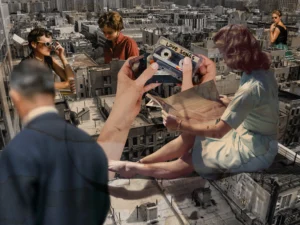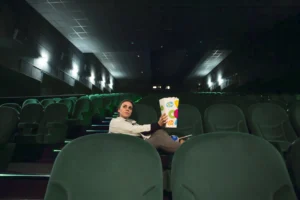The impact of CGI technology on Hollywood films. The rise of Computer-Generated Imagery (CGI) redefined the very DNA of Hollywood storytelling. While practical effects had long dominated film production, CGI opened new worlds—literally and creatively—that were once impossible to depict on screen. But its true impact goes beyond just visuals; CGI reshaped how stories are conceived, written, and consumed.
From Story Constraints to Story Freedom
Before CGI, directors and writers often had to tailor their ideas to physical limitations. A scene involving flying dragons, alien battles, or collapsing cities required either massive budgets, stop-motion, or miniature models. Today, with CGI, those constraints are largely gone. Films like Doctor Strange in the Multiverse of Madness (source) showcase surreal, shifting realities that are seamlessly integrated into the narrative. It’s not just about spectacle—these digital environments have become essential to the plot itself.
🎥 Question for readers: Which movie do you think used CGI in a way that genuinely enhanced its story, not just its visuals?
Elevating Genre Films to Mainstream
Science fiction and fantasy once lived on the margins of mainstream cinema. But CGI helped bring these genres to a global audience. Think of The Lord of the Rings trilogy (official link)—without CGI, Gollum would have been a puppet or heavily costumed actor. Instead, Weta Digital’s groundbreaking motion capture gave us a character with real emotional depth.
This shift allowed genre films to be taken seriously by critics and award shows alike. Avatar (2009), directed by James Cameron, broke box office records while using CGI to build the immersive world of Pandora—a feat that would have been impossible even a decade earlier.
The Evolution of CGI: From Gimmick to Industry Standard
CGI didn’t arrive overnight as a flawless miracle. Its journey through Hollywood is marked by trial, innovation, and transformation. What began as an experimental tool has now become a core pillar of modern filmmaking.
Pioneering Moments in CGI History
The seeds of CGI were planted in the late 1970s and early ’80s. Films like Tron (1982) and The Last Starfighter (1984) pushed boundaries but were limited by technology and budget. However, a true turning point came with Jurassic Park (1993), when Industrial Light & Magic (ILM) blended practical effects with computer-generated dinosaurs to jaw-dropping effect (ILM official). For the first time, audiences believed they were seeing living, breathing prehistoric creatures on screen.
By the time The Matrix (1999) introduced “bullet time,” CGI was no longer a gimmick—it was a storytelling necessity. The ability to slow time, shift perspectives, and bend visual logic helped redefine action cinema.
Modern CGI: A Tool for Photorealism
The pursuit of realism has since become the gold standard. Modern CGI can replicate skin textures, natural lighting, water physics, and even facial expressions with uncanny accuracy. Just consider the photo-realistic animals in The Jungle Book (2016) or The Lion King (2019) (Disney link). While some debate their artistic merit, the technical achievement is undeniable.
Still, as CGI becomes indistinguishable from live footage, it raises questions:
🧠 Does hyper-realistic CGI enhance immersion, or does it risk losing the creative essence of filmmaking?
CGI and the Decline of Practical Effects: A Double-Edged Sword
While CGI has unlocked incredible possibilities, it has also contributed to the decline of traditional craftsmanship in filmmaking. Practical effects—long praised for their tangible realism—have taken a backseat in many blockbuster productions.
When Practical Effects Still Shine
It’s important to note that practical effects haven’t vanished completely. Directors like Christopher Nolan are known for minimizing CGI in favor of in-camera action. For example, Dunkirk (2017) relied heavily on real ships, practical explosions, and aerial shots to preserve authenticity. The results were immersive and critically acclaimed.
Yet in many modern films, CGI often replaces practical solutions, even when unnecessary. The original Star Wars trilogy used models and matte paintings to stunning effect, while the prequel trilogy leaned heavily on green screens—resulting in mixed reviews from longtime fans.
This shift has sparked a recurring debate among film enthusiasts:
🎬 Is CGI replacing creativity with convenience? Or is it simply the next step in the evolution of cinematic art?
The Rise of “CGI Fatigue”
Audiences, particularly those who value cinematic realism, have begun voicing concerns over the overuse of CGI. The term “CGI fatigue” is increasingly common in reviews of modern blockbusters that feel visually overwhelming or emotionally hollow.
Films like The Flash (2023) faced criticism for uneven effects and an overreliance on digital doubles (Variety article), despite a massive budget. When CGI is poorly integrated or used as a crutch, it can distance viewers from the narrative instead of drawing them in.



